Telescopes for StarGazing?
Discussion
Moonhawk said:
Whilst go-to does sound great in principle - they aren't infallible. My setup cost thousands - but the go to function is still a little hit and miss - and required quite a lot of preparation.
Invariably it puts the object i'm looking for out of the field of view unless I have a very low magnification eyepiece - and that means you still need to know what to look for and how to look for it (which generally comes with experience of hunting using a manual scope).
Personally - I think a larger manual scope together with some star charts and a section of eyepieces would be a better option. There is a certain thrill that comes from hunting for and finding an object - and you learn along the way. There is also the opportunity to spot other interesting things whilst searching for your object (coloured double stars, open clusters etc) that may be overlooked by going to the same objects night after night just because they are in the telescope's database.
If you do decide to go down the Go-to route - you will be looking at quite a small scope which will limit the objects available to view to a few dozen anyway - even though the scope will boast "thousands of objects" in its database.
IMO a 5-6 inch Newtonian on an equatorial mount plus a few eyepieces would be my default starter scope at the £300 price point.
(Almost) exactly what I did - I pushed to 400 and got an 8 inch, but otherwise the same thinking. Goto scopes at that price range are tiny, and bigger is better. And as said, the learning to find your way around is part of the funInvariably it puts the object i'm looking for out of the field of view unless I have a very low magnification eyepiece - and that means you still need to know what to look for and how to look for it (which generally comes with experience of hunting using a manual scope).
Personally - I think a larger manual scope together with some star charts and a section of eyepieces would be a better option. There is a certain thrill that comes from hunting for and finding an object - and you learn along the way. There is also the opportunity to spot other interesting things whilst searching for your object (coloured double stars, open clusters etc) that may be overlooked by going to the same objects night after night just because they are in the telescope's database.
If you do decide to go down the Go-to route - you will be looking at quite a small scope which will limit the objects available to view to a few dozen anyway - even though the scope will boast "thousands of objects" in its database.
IMO a 5-6 inch Newtonian on an equatorial mount plus a few eyepieces would be my default starter scope at the £300 price point.
Mine came with two eyepieces - you change your magnification by changing eyepieces - you can get "zooms" but normally it's by having different lenses. Starter scopes will usually come with a couple.
Having said "bigger is better" do watch out if he's an older chap - when on the stand my setup weighs around 75Kg, so it can be a bit of a faff to set up - so a 6 incher might well be more usable.
HereBeMonsters said:
That makes a lot of sense, thanks for your reply. I knew I'd end up getting the wrong thing if I didn't ask, so very glad I did now. If say, we could push the budget to around £4-500 - what would you recommend?
Could you clarify one point though - what exactly do extra eyepieces do? Does it not come with one?
Most telescopes will come with one or two eyepieces as standard. The eyepieces give two things - magnification and field of view.Could you clarify one point though - what exactly do extra eyepieces do? Does it not come with one?
The smaller the eyepiece (in mm) the higher the magnification - so if a 20mm eyepiece gave 100x magnification on your scope, then a 10mm eyepiece would give 200x - and vice versa. Just be aware of the 50x per inch rule. The actual magnification you get from any given eyepiece depends on both the eyepiece and the telescope. The magnification is calculated by dividing the telescope focal length - by the focal length of the eyepiece. This means that some telescopes with high focal lengths are designed for high magnification viewing - whereas other telescopes with shorter focal lengths will give lower magnification views. Each has it's merits depending on what you are looking at.
Eyepieces also come in different field of view - so for example a 10mm eyepiece with a 52 degree field of view would have the same magnification as a 10mm eyepiece with a 100 degree FOV - but the latter would show more sky through the eyepiece. Great for extended objects like star clusters and large galaxies.
Sometimes telescopes will also come with something called a Barlow lens. You use this in conjunction with an eyepiece - and it effectively doubles the magnification. So you may find telescopes that come with one 26mm eyepiece and a Barlow lens (which effectively makes your 26mm eyepiece act like a 13mm one would).
Sometimes when buying a new scope - you can get deals on eyepiece/filter sets.
I'm not sure what is out there in the £4-500 range - although I have just taken a look at the FLO website - and the Celestron SLT range seems to be in your budget. There are two decent sized scopes in this range, a 130mm newt and a 127mm mak and both have go-to functionality and come with two eyepieces. The newt will give wider views as it has a much lower focal length than the mak (~600 vs ~1500).
I don't have any experience with these scopes however - although Celestron themselves are pretty well regarded. It might be worth giving FLO a ring and having a chat - or ask on stargazers lounge to see if anyone on there has one.
If you were to get one of these scopes - i'd probably consider adding a lower magnification eyepiece into the mix as well (say 40mm+) - plus a moon filter. The moon can be pretty bright in a 5" scope. That package should still come in around £400ish.
http://www.firstlightoptics.com/slt-series.html
This is what a friend of mine bought. He's since added a webcam and tracking drive mount. It's great. I often go gazing with him with this. Under £300 and very upgradable.
http://www.firstlightoptics.com/dobsonians/skywatc...
http://www.firstlightoptics.com/dobsonians/skywatc...
Hello HereBeMonsters,
I bought a Skywatcher 120 mm refractor several years back. This cost about £350 with a decent tripod. Ideally I would have liked a nice big Schmitt Cassegrain but I wasn't convinced the use I would get justified the price (approx £1500). Celestron & Meade telescopes are/were the scopes to go for if you can afford it. Maybe your father will get bitten by the bug and that will make choosing presents for him simpler for a few years, though it could get expensive.
A decent set of eyepieces and filters can set you back as much as my scope, if not more, but offer greater versatility and interest.
The refractor has the advantage that it does not need the collimation (alignment of mirror)adjusting now and again that you need to do with a Newtonian. It also has the eyepiece at the end which is better for my small children, though this can be annoying for me when something is directly overhead.
With this I can see Mars, Venus, Jupiter and it's moons, Saturn quite well. I get good detail on the moon. Star clusters are good as well, though some clusters are best through the finder scope.
Having said that, as other people have pointed out, it's not all pretty pictures like in the books.
Best things I' seen so far are the planets, Saturn is always cool with it's rings, details on the moon and some good star clusters. Nebulae have proved a bit disappointing though, monochrome smudges that require a bit of imagination. Ultimately though my best observation was entirely buy luck. Whilst trying to find a star cluster in the finder scope a bright dot moved across the scope, closely followed by another dot on the same track. I knew the shuttle was up & checked the ISS tracking sites which confirmed it to be the shuttle approaching the ISS.
Currently I only get the scope out about 3 times a year but but that's mainly due to having three children, a job and other hobbies leaving me too knackered to creep around in my garden at 1.00 am.
I bought a Skywatcher 120 mm refractor several years back. This cost about £350 with a decent tripod. Ideally I would have liked a nice big Schmitt Cassegrain but I wasn't convinced the use I would get justified the price (approx £1500). Celestron & Meade telescopes are/were the scopes to go for if you can afford it. Maybe your father will get bitten by the bug and that will make choosing presents for him simpler for a few years, though it could get expensive.
A decent set of eyepieces and filters can set you back as much as my scope, if not more, but offer greater versatility and interest.
The refractor has the advantage that it does not need the collimation (alignment of mirror)adjusting now and again that you need to do with a Newtonian. It also has the eyepiece at the end which is better for my small children, though this can be annoying for me when something is directly overhead.
With this I can see Mars, Venus, Jupiter and it's moons, Saturn quite well. I get good detail on the moon. Star clusters are good as well, though some clusters are best through the finder scope.
Having said that, as other people have pointed out, it's not all pretty pictures like in the books.
Best things I' seen so far are the planets, Saturn is always cool with it's rings, details on the moon and some good star clusters. Nebulae have proved a bit disappointing though, monochrome smudges that require a bit of imagination. Ultimately though my best observation was entirely buy luck. Whilst trying to find a star cluster in the finder scope a bright dot moved across the scope, closely followed by another dot on the same track. I knew the shuttle was up & checked the ISS tracking sites which confirmed it to be the shuttle approaching the ISS.
Currently I only get the scope out about 3 times a year but but that's mainly due to having three children, a job and other hobbies leaving me too knackered to creep around in my garden at 1.00 am.
Moonhawk said:
If you were to get one of these scopes - i'd probably consider adding a lower magnification eyepiece into the mix as well (say 40mm+) - plus a moon filter. The moon can be pretty bright in a 5" scope. That package should still come in around £400ish.
Just to confuse the OP more  , my Skywatcher reflector end cap has a small 2 or 3 inch hole in it with a separate cap, so you can cut down on the light when observing the moon. Simple but works very well, and free - so worth checking before shelling out extra.
, my Skywatcher reflector end cap has a small 2 or 3 inch hole in it with a separate cap, so you can cut down on the light when observing the moon. Simple but works very well, and free - so worth checking before shelling out extra.You need something though or it'll fry your eyeballs!
The chap has come back to me with some options, both slightly over budget of course!
Trying to decide between:
http://www.firstlightoptics.com/dobsonians/skywatc...
and
http://www.firstlightoptics.com/reflectors/skywatc...
Not sure what the difference is between a Dobsonian or a Reflector, both around the same price, but the chap reckoned the reflector is more upgradable, and comes on a better mount?
ETA: Also, I have no idea what a "Barlow" is. Looks to be like a Tele-converter on a camera?
Trying to decide between:
http://www.firstlightoptics.com/dobsonians/skywatc...
and
http://www.firstlightoptics.com/reflectors/skywatc...
Not sure what the difference is between a Dobsonian or a Reflector, both around the same price, but the chap reckoned the reflector is more upgradable, and comes on a better mount?
ETA: Also, I have no idea what a "Barlow" is. Looks to be like a Tele-converter on a camera?
Edited by HereBeMonsters on Thursday 25th September 11:19
Oh right, so the optics are the same, it's just the mount?
I think our current plan is just to spend as much as our budget will allow on the basic telescope, then he can add an equatorial mount, more eyepieces, converters and a go-to thingy on later if he wants to.
Gives us something to buy him for future birthdays as well!
As I said before, weight etc. isn't an issue as the furthest he will be going is bottom of the garden - about 500 yards. Something upgradeable is what we're after, and if it's got the ability to attach an SLR camera, then that'd be great.
I think our current plan is just to spend as much as our budget will allow on the basic telescope, then he can add an equatorial mount, more eyepieces, converters and a go-to thingy on later if he wants to.
Gives us something to buy him for future birthdays as well!
As I said before, weight etc. isn't an issue as the furthest he will be going is bottom of the garden - about 500 yards. Something upgradeable is what we're after, and if it's got the ability to attach an SLR camera, then that'd be great.
HereBeMonsters said:
Oh right, so the optics are the same, it's just the mount?
I think our current plan is just to spend as much as our budget will allow on the basic telescope, then he can add an equatorial mount, more eyepieces, converters and a go-to thingy on later if he wants to.
Not quite. I think our current plan is just to spend as much as our budget will allow on the basic telescope, then he can add an equatorial mount, more eyepieces, converters and a go-to thingy on later if he wants to.
Although the optics themselves may be similar - the construction of the telescope would differ significantly
It would be quite difficult to upgrade a dobsonian telecope to utilise an equatorial mount. Things like go-to are usually integrated into the mount - and not really available as an "upgrade" option. If you want a go-to scope - you pretty much have to buy one off the bat.
Moonhawk said:
HereBeMonsters said:
Oh right, so the optics are the same, it's just the mount?
I think our current plan is just to spend as much as our budget will allow on the basic telescope, then he can add an equatorial mount, more eyepieces, converters and a go-to thingy on later if he wants to.
Not quite. I think our current plan is just to spend as much as our budget will allow on the basic telescope, then he can add an equatorial mount, more eyepieces, converters and a go-to thingy on later if he wants to.
Although the optics themselves may be similar - the construction of the telescope would differ significantly
It would be quite difficult to upgrade a dobsonian telecope to utilise an equatorial mount. Things like go-to are usually integrated into the mount - and not really available as an "upgrade" option. If you want a go-to scope - you pretty much have to buy one off the bat.
 ks. I feel like I'm back at square one now.
ks. I feel like I'm back at square one now.I would say, on balance, he'd probably be more interested in taking photos of stuff (including the moon) than having a computer point out stuff in the sky for him. I think trying to find things with charts and/or an iPad app would be more fun than just typing it in to a little box?
So, given that, a large refractor that can be upgraded to an equatorial mount in future? Or best to get a smaller one with the mount now?
To be honest, £300 is fine for a starter set. After all, your father might not 'take' to it so you haven't lost a great deal and if he does he will certainly develop his own preferences on which way he wants to go with regards to brands, mounts, lenses, etc.
With regards to the mount, I'd start with a non-goto as part of the fun is finding things. Pressing a couple of buttons and the novelty will soon wear off ("Oh look another star that looks exactly like the last 72"). There is a good sense of achievement in planning your evening and learning the night sky and being able to pick out stuff (even if there only smudges - knowing that particular smudge is a galaxy or summat is quite cool in a slightly nerdy way!)
With your budget you'll probably end up with a EQ2-3 mount which is alright for a starter but he'll probably be soon upgrading to an all singing and dancing and no doubt very expensive mount in short order but it will be his choice and preference.
Get him to download Stellarium and there are plenty of apps to play with.
Oh, and if he gets into astrophotography, then get your inheritance now as it will be greatly diminished quite quickly! There is ALWAYS something to buy next!
With regards to the mount, I'd start with a non-goto as part of the fun is finding things. Pressing a couple of buttons and the novelty will soon wear off ("Oh look another star that looks exactly like the last 72"). There is a good sense of achievement in planning your evening and learning the night sky and being able to pick out stuff (even if there only smudges - knowing that particular smudge is a galaxy or summat is quite cool in a slightly nerdy way!)
With your budget you'll probably end up with a EQ2-3 mount which is alright for a starter but he'll probably be soon upgrading to an all singing and dancing and no doubt very expensive mount in short order but it will be his choice and preference.
Get him to download Stellarium and there are plenty of apps to play with.
Oh, and if he gets into astrophotography, then get your inheritance now as it will be greatly diminished quite quickly! There is ALWAYS something to buy next!
HereBeMonsters said:
Oh b ks. I feel like I'm back at square one now.
ks. I feel like I'm back at square one now.
I would say, on balance, he'd probably be more interested in taking photos of stuff (including the moon) than having a computer point out stuff in the sky for him. I think trying to find things with charts and/or an iPad app would be more fun than just typing it in to a little box?
So, given that, a large refractor that can be upgraded to an equatorial mount in future? Or best to get a smaller one with the mount now?
Out of the two options you have been suggested by FLO, personally i'd go with the 200mm newtonian over the Dob.  ks. I feel like I'm back at square one now.
ks. I feel like I'm back at square one now.I would say, on balance, he'd probably be more interested in taking photos of stuff (including the moon) than having a computer point out stuff in the sky for him. I think trying to find things with charts and/or an iPad app would be more fun than just typing it in to a little box?
So, given that, a large refractor that can be upgraded to an equatorial mount in future? Or best to get a smaller one with the mount now?
It's already on an equatorial mount.
ash73 said:
It's always tempting to spend a small fortune on a fancy scope, but it's the eyepieces that do all the work...
Yep. I had a neighbour who had a crappy jessops newtonian. I swapped out the stock eyepiece for one of my Meade series 4000 plossls - and it transformed the views. Still not a great scope - but 10x better with a half decent eyepiece.A really good eyepiece can make a massive difference even on a good telescope. I recently bought a televue plossl and it's a huge improvement over my series 4000s.
Just need to win the lottery now so I can buy a set full set of Televue Ethos eyepieces......at almost £500 a throw

Did anyone mention to the OP that astronomy can be a bottomless pit for money

ash73 said:
OP could always buy this... "buyer collects" 
US spy agency has a couple lying around if that's too far to collect
http://www.space.com/16000-spy-satellites-space-te...

Moonhawk said:
Out of the two options you have been suggested by FLO, personally i'd go with the 200mm newtonian over the Dob.
It's already on an equatorial mount.
Thanks - that's the one I'm leaning towards now.It's already on an equatorial mount.
It won't be too much will it? I mean, we'll still be able to see the Moon, and pick up planets etc.? It's not just for finding nebulae or whatever?
HereBeMonsters said:
Thanks - that's the one I'm leaning towards now.
It won't be too much will it? I mean, we'll still be able to see the Moon, and pick up planets etc.? It's not just for finding nebulae or whatever?
The newt is a good sized scope (200mm I believe) - which in old money is around 8".It won't be too much will it? I mean, we'll still be able to see the Moon, and pick up planets etc.? It's not just for finding nebulae or whatever?
My first scope was a 4.5" and I found plenty of nebulae, galaxies etc using that and I lived in a moderately light polluted area. Indeed Charles Messier found all of the "M" objects using a telescope that had an effective aperture of around 3.5" - so an 8", especially in a dark sky site will be plenty for deep sky objects.
http://en.wikipedia.org/wiki/Messier_object
A telescope's light gathering power goes up with the square of its diameter - so an 8" scope will be about 4x more powerful than a 4 inch.
My current setup consists of a 10" reflecting telescope - with a 3.5" retractor piggy backed.
Here are some pictures I have taken using my setup.
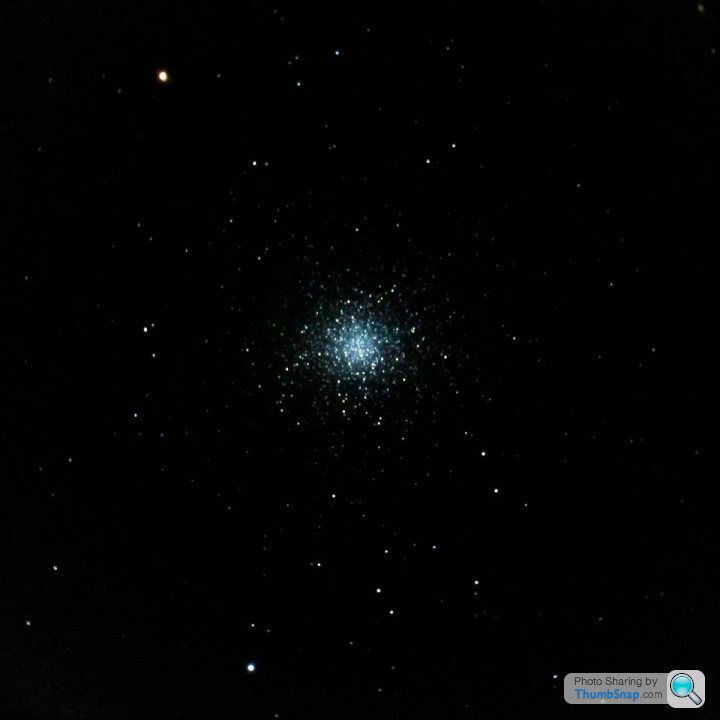
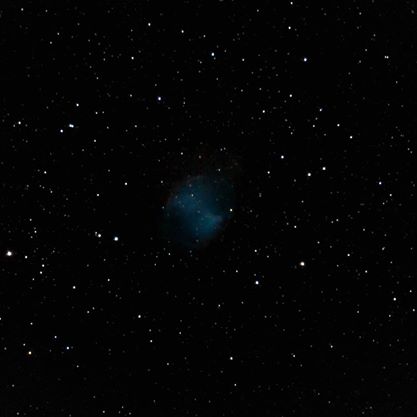
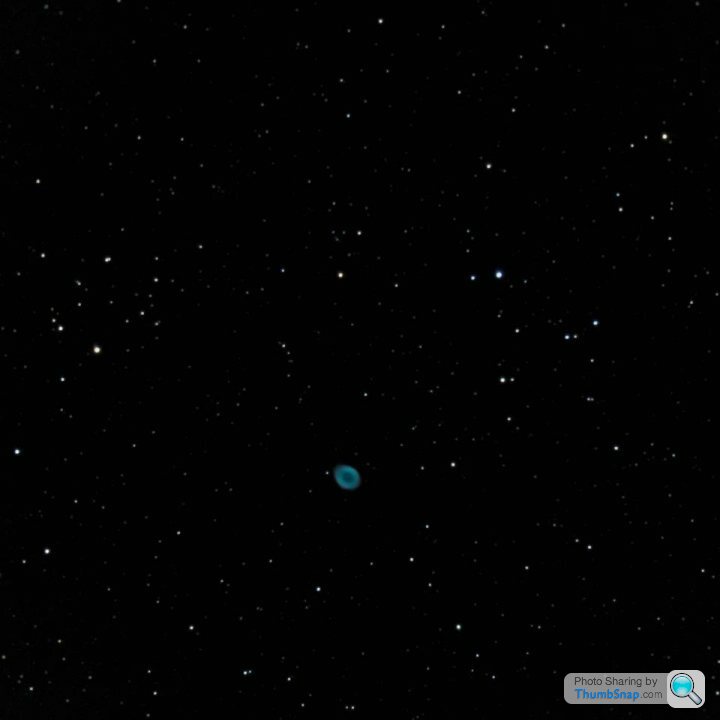
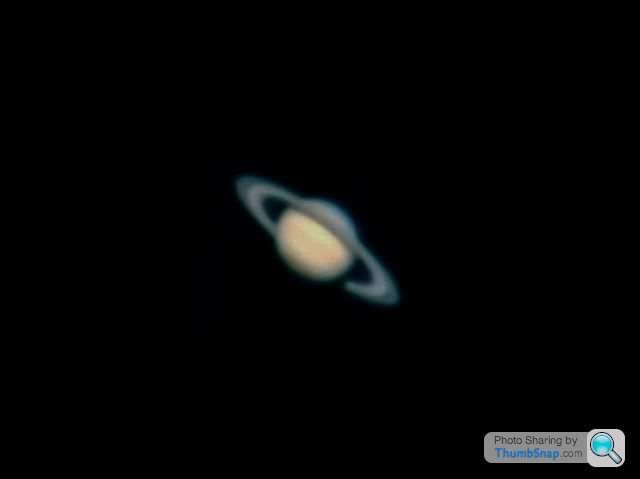
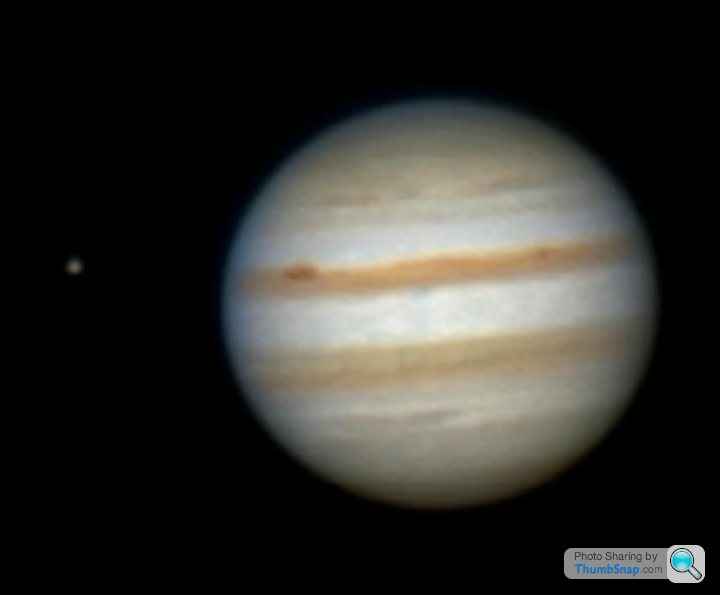
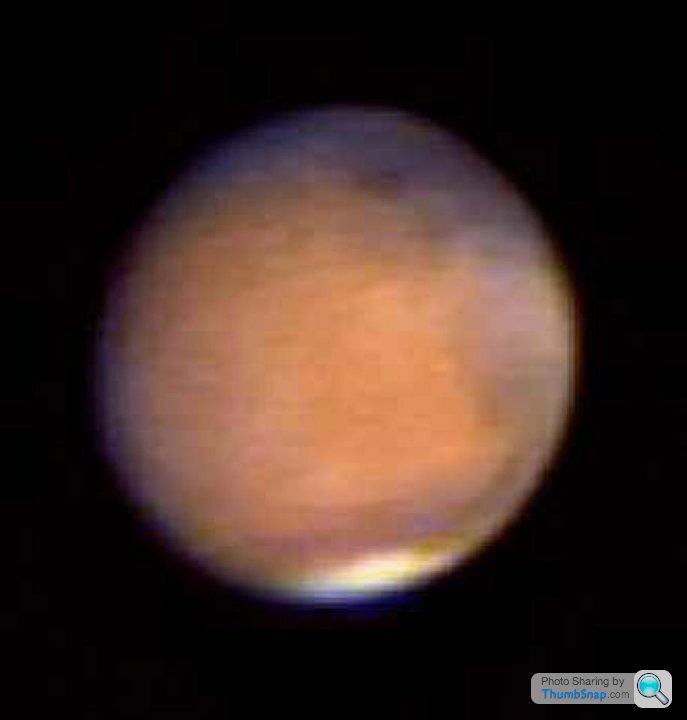
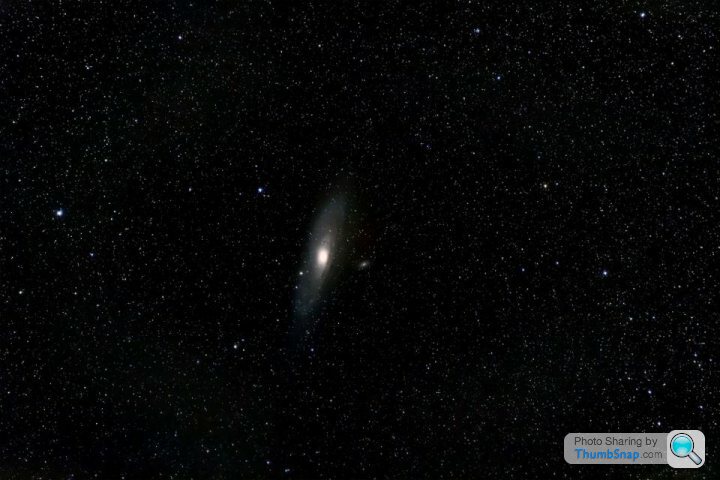
Although these were taken using my 10" scope using a webcam for the planets and an SLR for the DSOs (except the last one of the Andromeda galaxy - that was taken using a standard camera lens) - all of these were easily visible in my 4.5" even under moderate light pollution.
Edited by Moonhawk on Tuesday 30th September 11:29
nellyleelephant said:
Your Andromeda picture, details please! I've tried with a DSLR but not managed the detail you have.
The SLR was piggybacked on my telescope - tracking in Alt-Az mode.Camera was a 5D MK2 set at high iso (3200 or 6400 I think) and had a 70-200L F4 lens fitted (set to around 180mm and F4). I stacked about 10 x 30 second JPEG exposures and subtracted a few dark frames too. Registering and stacking was done in Deep Sky Stacker.
I corrected the background light pollution gradient and did some final tweaks using photoshop + noise ninja to get rid of the residual coloured iso noise/smooth the background.
Edited by Moonhawk on Tuesday 30th September 12:54
Gassing Station | Science! | Top of Page | What's New | My Stuff




